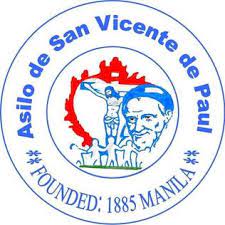Asilo de San Vicente de Paul embraces faith-based compassion, serving as a "Sanctuary of Hope" and providing refuge for individuals in need. It endeavors to embody the principles of kindness rooted in faith while dedicating itself to the betterment of society.

Back to where it all began... The enduring contribution of St. Vincent de Paul and St. Louise de Marillac to the Daughters of Charity (D.C.) is their deep-rooted commitment to providing care for the less fortunate. This calling continues to face new challenges.
Casa de San Vicente de Paul, affectionately called Asilo de San Vicente de Paul (ASVP), was established on July 26, 1885. The Asilo de San Vicente de Paul stands as a symbol of the enduring charity that its founder, Sr. Asuncion Ventura, D.C., embraced when she became the first Filipino woman to establish an orphanage in the Philippines. In 1968, ASVP received a license from the Department of Social Welfare and Development (DSWD) to operate as an institution caring for children. At the same time, it continued its role as an educational institution. After nearly three decades of being an academic center, the Institution reevaluated and redirected its focus. ASVP faced the challenge of enhancing its services as a haven for children, expanding opportunities for them to experience a regular school environment. Consequently, from 1982 to 1999, the governing body phased the school out gradually.
*With its Mission . . . We commit ourselves to the integral development of the marginalized sectors of the society through sustainable programs and services where resource sharing and participative involvement is a way of life.
*With its Vision ... Rooted in the Charity of Jesus Christ Crucified, Asilo de San Vicente de Paul is a Haven of Hope for persons living in poverty situations
*With its Core Values … Commitment to Vincentian Spirit, Spiritually-Rooted, Creative and Innovative, Family-Oriented, Focused and Collaborative, Holistic and Integrated.,
ASVP has a remarkable 136-year legacy of service. Saint Vincent emphasized the radical character of the Daughters of Charity's calling, encouraging them to understand that their ministries often required them to be away from home, immersed in people's lives, and sometimes even alone. The Daughters of Charity needed this task dedication beyond the usual expectations for Sisters, whose primary roles were within hospitals and similar settings. The timeless call to live by the Gospel profoundly, emulating the examples set by Saint Vincent and Saint Louise, remains unwavering: to embody the Love of Christ for those enduring poverty.
